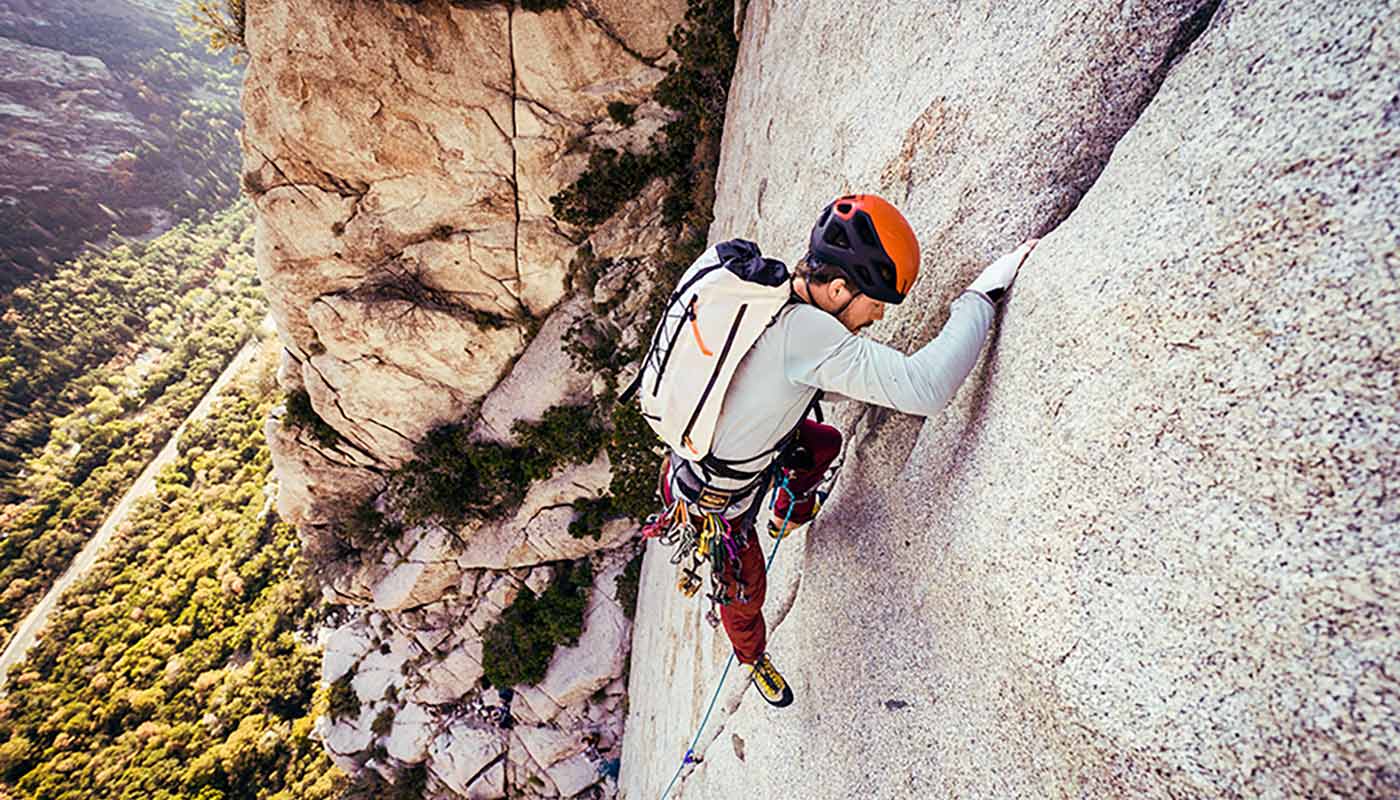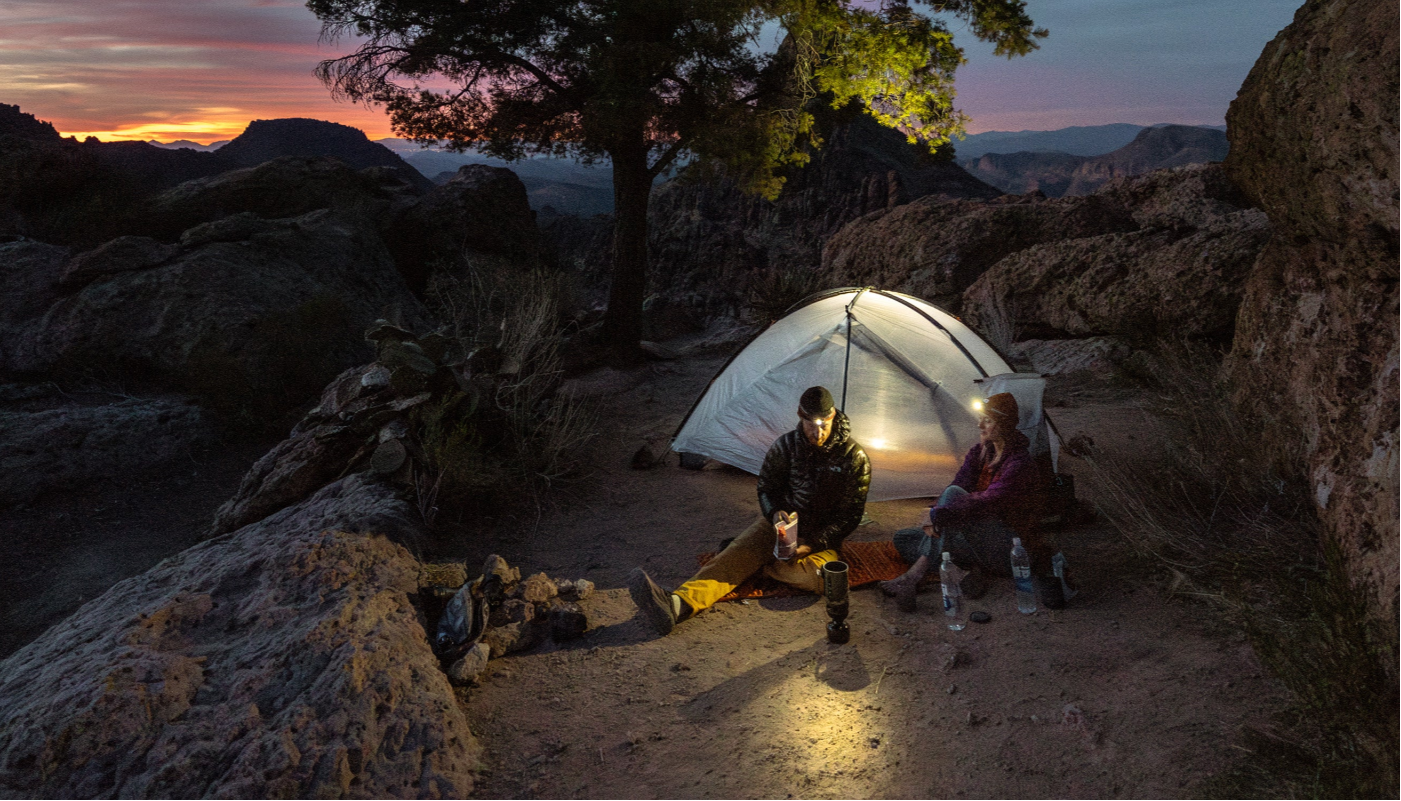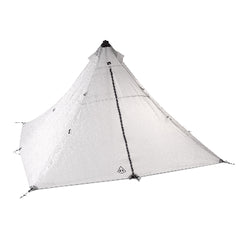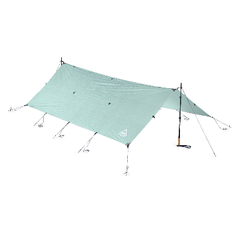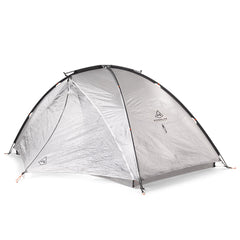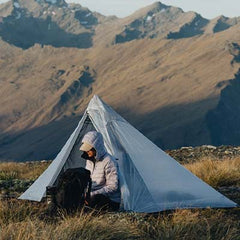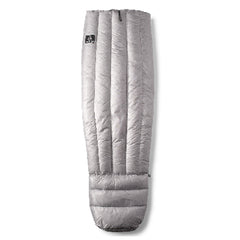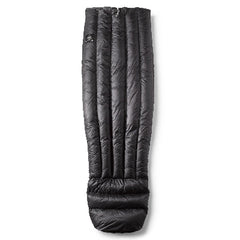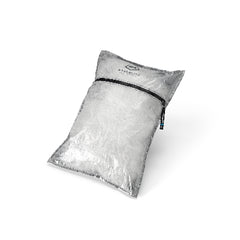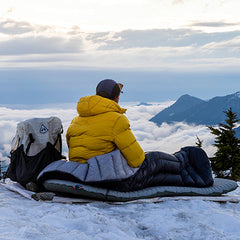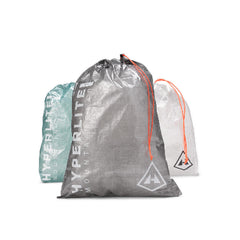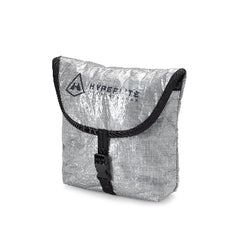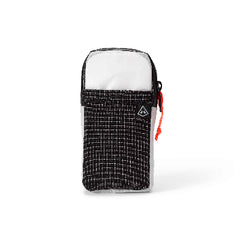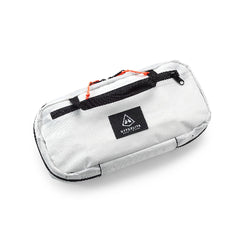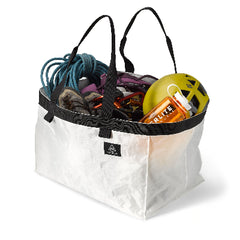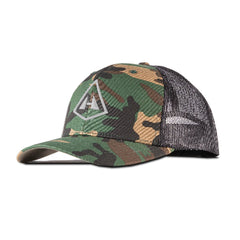Words and photos by Bjorn Olson
Kim and I stopped riding our expedition-loaded fat bikes so I could point my camera at a weather-worn and information-filled sign. “Welcome to Kotzebue,” it read. “An Eskimo village 35 miles north of the Arctic Circle.” We had flown to the village a few hours earlier, assembled our bikes at our friends Seth and Stacy’s house, and were out for a warm summer afternoon shakedown ride through town.
I squinted at the sign like a myopic geezer, trying to infer the meaning of sentences that the decades-old peeled paint made nearly impossible to discern. As I read aloud to Kim, an explosive crash erupted behind me. Without thinking, I jumped off the shoulder of the road. As I turned to look, I saw Kim and her bike crumpled like a pretzel under another bike with a man on top woven into the chaotic jumble. “I’m having a heart attack,” the man gasped while lying atop both bikes and my girlfriend.

Well before the ambulance came, I made my unprofessional diagnosis. This was no heart attack. The crumpled homeboy was blacked out drunk and had slammed his bike into Kim, who had been straddling hers. He’d knocked his wind out. “Try to exhale,” I coaxed while extending a hand and trying to stifle a chuckle at the ludicrous display unraveling at my feet.
Kim and I first came to Kotzebue in 2014. In March of that year, we rode our fat bikes on the Iditarod Trail, but rather than veer west to Nome, we continued north, over the Seward Peninsula, and became the first people to bike from Anchorage to the Arctic hub community. Since that trip, we have returned several times for other wintry fat bike expeditions.
This time, we’d flown to the community in the summer month of August to attempt a 200-mile fat bike and packraft route from Kotzebue to Point Hope.
The following afternoon, Kim and I fought a rowdy headwind in our packrafts for several unrelenting hours. Occasionally, gusts and wave-height increased, spilling water over our bows, filling the boats with water, and our guts with anxiety. When we made landfall, Kim joked, “Well, that was torture, but still not as dangerous as in town.”

Many of our summer fat bike and packraft trips through Alaska are leaps of faith and headlong charges into wild and unpredictable terrain. These trips often involve hike-a-biking and a modicum of excruciating effort. From the satellite imagery and topography maps, Kotzebue to Point Hope looked like a straight-ahead beach biking route with two big-water sections and several short lagoon mouth crossings for which we’d also need the packrafts.
The next morning, with our first of two big-water sections behind us, we strapped our rafts onto the handlebars of our bikes and followed a four-wheeler trail that wove through the centuries-old Inupiat fish and hunting camp of Sheshalik. When we rode past the last of the plywood shelter cabins, I stopped to photograph Kim riding down onto the beach that was to be our path ahead for the next 170 miles. How the ride-ability would be was anyone’s guess.

In the summer of 2017, Kim and I fat biked from Point Hope to the northernmost community in the United States - Utqiagvik (formerly Barrow). When we rode out of Point Hope on that trip, we immediately encountered soft pea-gravel and spongy tundra terrain that required incredible effort using our lowest gear with the lowest tire pressure. Eventually, the terrain on that trip improved, but as I watched Kim ride down to the beach out of Sheshalik, I braced myself for loose and slow riding conditions. It’s always better, I’ve found, to begin a trip expecting the worst.
An hour later, still seeing no evidence of a falling hammer or Damocles’ sword, I shifted into a higher gear and relished the compact terrain under my five-inch wide tires. After many difficult trips into the unknown, it appeared as though I’d picked a route that made some sense. Even a blind dog finds a bone now and then.

One week later, we rode the final miles to the edge of the indomitable Cape Thompson sea cliffs - the second big-water obstacle and final crux of our route. We’d made exceptionally good time. The beach riding had been as good as any we’d ever experienced and save for a two-day storm outside the village of Kivalina the weather had been remarkably warm and calm with surprisingly few insects.
A new and even stronger storm was beginning to manifest when we called it quits for the day at the edge of the cape. Conditions would have to improve before we launched our packrafts to paddle the seven miles in front of the sea cliffs.
Thankfully, we’d freshly resupplied with food at the midway village of Kivalina, there was driftwood for fires, and a beautiful clear-water stream nearby.
For three days, Kim and I sat out the strong Arctic gale in the uniquely famous valley known as Chariot. In the 1950s, Chariot became known on the national and international stage. A theoretical physicist by the name of Edward Teller, known as “the father of the hydrogen bomb,” proposed to transform the Arctic valley into a harbor by detonating a string of nuclear bombs.
At the height of the Cold War, the US Atomic Energy Commission moved forward with this “peaceful” yet psychotic nuclear demonstration project. Opposition from the local inhabitants of Point Hope, who depend on the area for caribou hunting, clean water, and who generally prefer to live nuclear radiation-free, finally won the day. In 1962, the project was “held in abeyance,” but it has still never been officially canceled.
On the fourth evening of our protracted and marvelous layover at Chariot, the winds finally came down. With the summer sun still well above the horizon, we launched into the most spectacular paddle of our lives at 7:00 p.m.

Few places in Arctic Alaska rival the sea cliffs of Cape Thompson, its neck-craning sheer relief, and abundant nesting seabirds that number in the millions. Into the long light of dusk, we pulled along under the cliffs and watched in awe as thousands of murres, puffins, and kittiwakes dove from the cliffs and swarmed above our heads. Murre chicks had just reached a stage in their rapid, half-summer development; they clumsily flew from their hundreds-of-feet-high natal nests and crash-landed into the water around us, awaiting further instruction from their protective fathers. Our attention flitted like the birds as we tried to take in all the extraordinary displays and the grandeur of our surroundings, filling our senses to the brim, and creating a hypnotic satori-like trance.

At 11:00 p.m., we made landfall on the far side of the cliffs; all that remained was a straight-ahead 25-mile beach ride to the village. Before falling asleep, I thought of our friend, the famous Alaskan author, Seth Kantner. Before Seth was born, his father had lived with an Inupiat couple near Chariot when the Atomic Energy Commission was still planning to blow the place sky-high. The couple was along in their years, but still preferred living away from the village, and out on the land. From them, Seth’s dad learned how to survive and thrive in the harsh Arctic climate, wisdom that he later passed down to Seth. He says that his father likes to joke about Edward Teller; “He’s still mad that he didn’t get to blow up those bird cliffs.”

It’s impossible to imagine from the comfort of home what dangers and unexpected adventures we’ll have when we strike out on these trips through Alaska. We come prepared for frostbite, overflow, storms, gear malfunctions, and other known hazards, but it’s difficult to anticipate everything. Thankfully, nuclear fallout isn’t yet on the list, and we’ve found that the drunk homeboys are few and far between once you finally get out of town.

Bjorn Olson is an Alaskan-born adventurer, climate activist, and photographer and filmmaker. For more of his trip reports, photography, films, and tales of Alaska, check out his website, http://www.mjolnirofbjorn.com/ Olson and McNett use bikes from Salsa Cycles and packrafts from Alpacka Raft for their expeditions.
